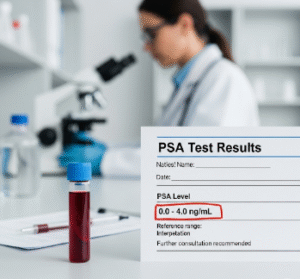Overview
Vomiting blood, medically known as hematemesis, is the expulsion of blood from the upper gastrointestinal (GI) tract through the mouth. It is a potentially serious symptom that requires immediate medical attention, as it may indicate bleeding in the esophagus, stomach, or duodenum.
➤ The blood may appear bright red (fresh bleeding) or dark, coffee-ground-like (partially digested).
➤ Hematemesis can be associated with underlying gastrointestinal conditions, liver disease, trauma, or medications.
➤ In Korea, gastroenterology clinics provide diagnostic endoscopy, medical management, and interventional procedures for hematemesis.
Key Facts
► Definition: Vomiting blood from the upper gastrointestinal tract.
► Prevalence: Relatively uncommon but a medical emergency when it occurs.
► Associated symptoms: Abdominal pain, dizziness, weakness, black stools, or shock.
► Risk factors: Peptic ulcer disease, gastritis, esophageal varices, liver disease, NSAID use, alcohol consumption.
► Treatment in Korea: Urgent medical care with endoscopic intervention, medications, and supportive care.
What Is Vomiting Blood?
Vomiting blood occurs when blood enters the upper GI tract and is expelled through the mouth.
➔ Bright red blood usually originates from active bleeding in the esophagus or stomach.
➔ Dark, coffee-ground-like vomitus indicates blood partially digested by stomach acid, often from the stomach or duodenum.
➔ Hematemesis can lead to hypovolemic shock if bleeding is severe, making early recognition and treatment critical.
What Symptoms Are Related to Vomiting Blood?
Symptoms vary depending on bleeding severity and underlying cause:
→ Nausea and vomiting, sometimes preceding hematemesis.
→ Abdominal pain or discomfort, often in the upper abdomen.
→ Dizziness, lightheadedness, or fainting due to blood loss.
→ Tachycardia (rapid heartbeat) and hypotension (low blood pressure) in severe cases.
→ Black or tarry stools (melena) if blood passes through the intestines.
→ Paleness, weakness, or fatigue caused by anemia.
→ Jaundice or liver-related symptoms if underlying liver disease is present.
Causes / Possible Causes of Vomiting Blood
Gastrointestinal Causes
➤ Peptic ulcers (gastric or duodenal) – Erosion of stomach or duodenal lining causes bleeding.
➤ Gastritis or esophagitis – Inflammation of the stomach or esophagus due to infection, NSAIDs, or alcohol.
➤ Mallory-Weiss tear – A tear in the esophagus caused by forceful vomiting or retching.
➤ Esophageal varices – Dilated veins in the esophagus due to liver cirrhosis, prone to rupture.
➤ Tumors – Gastric or esophageal cancers can present with bleeding.
Medication and Substance-Related Causes
➔ NSAIDs, aspirin, and anticoagulants can cause mucosal injury and bleeding.
➔ Alcohol abuse increases risk of gastritis, varices, and ulcers.
Other Causes
→ Trauma to the mouth or esophagus.
→ Severe infections such as H. pylori infection leading to ulceration.
→ Rare vascular conditions like Dieulafoy lesion or vascular malformations.
When Should I See My Doctor?
Vomiting blood is a medical emergency. Seek immediate care if:
➤ Vomiting bright red blood or large amounts.
➤ Accompanied by dizziness, fainting, low blood pressure, or rapid heartbeat.
➤ Persistent vomiting with black or coffee-ground-like material.
➤ Associated with severe abdominal pain, jaundice, or liver disease.
➤ Early medical intervention reduces risk of shock, organ failure, and life-threatening complications.
Care and Treatment
Immediate Emergency Care
► Stabilization with intravenous (IV) fluids or blood transfusion if necessary.
► Monitoring vital signs, including blood pressure, heart rate, and oxygen saturation.
► Nasogastric tube in select cases to assess ongoing bleeding.
Medical Treatments
➔ Proton pump inhibitors (PPIs) to reduce gastric acid and promote clotting of ulcers.
➔ Octreotide for variceal bleeding to decrease portal hypertension.
➔ Antibiotics if infection like H. pylori or systemic infection is involved.
➔ Vitamin K or other agents if bleeding is related to coagulopathy.
Procedural and Advanced Interventions
→ Endoscopy is the primary diagnostic and therapeutic tool to identify bleeding source and perform interventions (e.g., clipping, cauterization, banding).
→ Interventional radiology with embolization for uncontrolled bleeding.
→ Surgery in rare cases where bleeding cannot be controlled endoscopically.
Treatment Options in Korea
Korean hospitals provide comprehensive care for hematemesis:
Diagnosis in Korea
➤ Urgent endoscopy to locate and treat the bleeding site.
➤ Blood tests to assess hemoglobin, coagulation, liver function, and infection markers.
➤ Imaging such as CT scan if perforation, tumors, or varices are suspected.
Non-Surgical Care
► IV fluids, proton pump inhibitors, and supportive medications.
► Monitoring in intensive care units (ICU) if bleeding is severe.
► Management of underlying conditions, including liver disease, ulcers, or gastritis.
Advanced and Surgical Care
➔ Endoscopic interventions such as hemostatic clipping, variceal banding, or thermal coagulation.
➔ Interventional radiology for embolization of bleeding vessels.
➔ Surgery for persistent or life-threatening bleeding.
Rehabilitation and Lifestyle Support
→ Dietary modifications to prevent recurrence (avoiding irritants like NSAIDs, alcohol, and spicy foods).
→ Treatment of H. pylori infection to reduce ulcer-related bleeding.
→ Long-term monitoring for patients with liver disease, coagulopathy, or recurrent gastrointestinal bleeding.
Korean hospitals combine expert gastroenterologists, advanced endoscopic tools, and intensive care support, ensuring effective management of vomiting blood and prevention of life-threatening complications.













